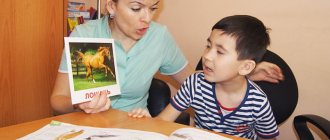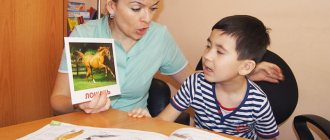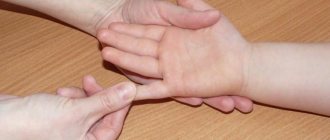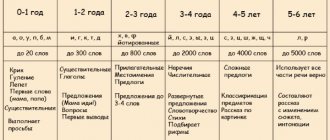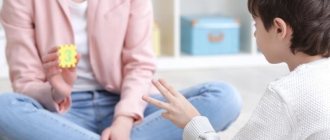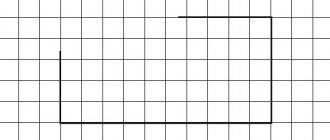Train now
Train right now on this page, for free and without registration.
Anagrams
Start with anagrams, they will help develop such qualities as: attention, concentration, speed of thought, speed reading. In this game you have to choose 1 option out of 4, in which only those letters that are part of the given word are mixed. Each round a new word is given. Remember that time is limited! The faster you look for the answer, the more points you will get at the end of the game.
Schulte tables
The Schulte table is one of the most effective exercises for developing the brain, attention, concentration, and accelerating visual search. This exercise is also the most popular exercise for developing speed reading. Schulte tables usually consist of randomly placed numbers or letters. The number of cells in tables also varies and most often they are 5x5 elements in size.
Why do we get distracted
Let's highlight the main reasons why we find it difficult to concentrate.
More than 100 cool lessons, tests and exercises for brain development Start developing
Lack of willpower
Willpower in simple words is the ability to control your attention. Concentrate on what is important and cut off what is unimportant. Therefore, by developing willpower, you simultaneously improve the quality of your attention.
Discomfort
Uncomfortable posture, pain, hunger - all these are distractions that draw attention to themselves. You are probably aware that our brain processes body signals first. Therefore, before starting work, try to eliminate all these interferences.
A bunch of unsolved cases
It is very difficult to concentrate when many problems hang over you like a sword of Damocles. Even if you don't think about them at a particular moment in time, they still loom somewhere on the periphery of your consciousness. Start raking them slowly - time management will help you.
Video training from the course: How to correctly complete Schulte Tables for developing attention
Subscribe and new useful exercises will always be at hand:
VKontakteInstagramZenFacebookTelegramYoutube
Search for numbers and letters
Try also to practice searching for letters. These exercises are great for developing peripheral vision and speed reading. You can read more about this exercise in the separate article Search for letters and in the article with the simulator Search for numbers and numbers.
Tag
Tag is a great way to exercise your brain! The game of tag is a square board divided into 16 equal square sections. You have 15 square dominoes at your disposal, numbered accordingly. The dominoes themselves are randomly mixed inside the box.
The essence of this game is to put the dominoes in order, namely to place the numbers one after another from top to bottom, from left to right, therefore, the empty square should be from the bottom to the right. The game will help you develop logical thinking and memory, because it is useful to remember various tricks and combinations. You will also be able to develop the ability to calculate moves ahead without making mistakes. Shall we play?
Board game Panic in the Lab
We arrange all the heroes in a circle and roll four dice. One of them will tell you which laboratory the ward escaped from. And the other three are who you need to look for. Whoever finds the right fugitive first gets a token. To win you need to collect five tokens. In addition to developing all the properties of attention, here we also learn to analyze five characteristics at once.
Developmental courses
In addition to games, we have interesting courses that will perfectly boost your brain in the following interesting areas:
Speed reading in 30 days
Would you like to quickly read books, articles, newsletters, etc. that interest you? If your answer is “yes,” then our course will help you develop speed reading and synchronize both hemispheres of the brain.
With synchronized, joint work of both hemispheres, the brain begins to work many times faster, which opens up much more possibilities. Attention , concentration , speed of perception are enhanced many times over! Using the speed reading techniques from our course, you can kill two birds with one stone:
- Learn to read very quickly
- Improve attention and concentration, as they are extremely important when reading quickly
Sign up for a courseFree lesson
Development of memory and attention in a child 5-10 years old
The purpose of the course: to develop the child’s memory and attention so that it is easier for him to study at school, so that he can remember better.
After completing the course, the child will be able to:
- 2-5 times better to remember texts, faces, numbers, words
- Learn to remember for a longer period of time
- The speed of recalling the necessary information will increase
Sign up for a courseRead more
Super memory in 30 days
As soon as you sign up for this course, you will begin a powerful 30-day training in the development of super-memory and brain pumping.
Within 30 days after subscribing, you will receive interesting exercises and educational games in your email that you can apply in your life.
We will learn to remember everything that may be needed in work or personal life: learn to remember texts, sequences of words, numbers, images, events that happened during the day, week, month, and even road maps.
Sign up for a courseRead more
How to improve memory and develop attention
Free practical lesson from advance.
Sign up for freeRead more
Secrets of brain fitness, training memory, attention, thinking, counting
If you want to speed up your brain, improve its functioning, improve your memory, attention, concentration, develop more creativity, perform exciting exercises, train in a playful way and solve interesting problems, then sign up! 30 days of powerful brain fitness are guaranteed to you:)
Sign up for a courseRead more
We speed up mental arithmetic, NOT mental arithmetic
Secret and popular techniques and life hacks, suitable even for a child. From the course you will not only learn dozens of techniques for simplified and quick multiplication, addition, multiplication, division, and calculating percentages, but you will also practice them in special tasks and educational games!
Sign up for a courseRead more
Train your memory, attention and thinking online with Ikyusha
Go to classes
While developing these processes, many parents, unfortunately, forget about the importance of:
- A complete balanced diet. Diversify your child’s menu by including the necessary vitamins and microelements for proper brain function.
- Sports activities. When a child moves little, his blood is not sufficiently saturated with oxygen, and fatigue appears. This way the baby gets tired faster. If physical activity is contraindicated, just spend more time in the fresh air, taking evening walks with the whole family.
- Have a healthy sleep. Lack of sleep has a bad effect on children's brain activity and memory. Attention becomes distracted, the child becomes uncollected and lethargic.
Remember that first of all you need to create comfortable conditions for children, and only then start learning.
What other points should you consider before starting classes?
- Classes must be regular. Systematic repetition of exercises is the main key to success.
- The duration of the lesson should not exceed 10-15 minutes. Otherwise, such games and exercises will become boring, and the need to repeat them will cause negative emotions.
- Don't force your child to study if he doesn't want to. Turn the lesson into an exciting game, then your baby will always be in a great mood and want to repeat the exercises again and again.
- It is important to gradually increase the difficulty of the training if you want to see progress in children. Slowly add new ones to well-known exercises or complicate your child’s favorite tasks.
There are many different exercises and games to develop children's attention, thinking and memory. We have selected the most interesting and effective ones for you and distributed them by age. Ready to get started?
LiveInternetLiveInternet
Wednesday, March 25, 2015 22:13 + in the quote book Play with children with ADHD Games at the table to develop concentration Prepared by an ADHD mother “Where was that” 1 The child is shown several objects lying on the table. When he turns away, one of the objects is removed or rearranged. The child is required to indicate what has changed. You should start with a small number of items, gradually increasing it. “Find the difference” (Lyutova E.K., Monina G.B.) 2 Goal: developing the ability to concentrate on details. The child draws any simple picture (a cat, a house, etc.) and passes it to an adult, but turns away. The adult completes a few details and returns the picture. The child should notice what has changed in the drawing. Then the adult and child can switch roles. The game can also be played with a group of children. In this case, the children take turns drawing a picture on the board and turning away (the possibility of movement is not limited). The adult completes a few details. Children, looking at the drawing, must say what changes have occurred. “Tender Paws” (Shevtsova I.V.) 2 Purpose: relieving tension, muscle tension, reducing aggressiveness, developing sensory perception, harmonizing relationships between a child and an adult. An adult selects 6-7 small objects of different textures: a piece of fur, a brush, a glass bottle, beads, cotton wool, etc. All this is laid out on the table. The child is asked to bare his arm up to the elbow; The teacher explains that an “animal” will walk along your hand and touch you with its affectionate paws. With your eyes closed, you need to guess which “animal” touched your hand - guess the object. Touches should be stroking and pleasant. Game option: the “animal” will touch the cheek, knee, palm. You can change places with your child. “Conversation with hands” (Shevtsova I.V.) 2 Purpose: to teach children to control their actions. If a child gets into a fight, breaks something, or hurts someone, you can offer him the following game: trace the silhouette of your palms on a piece of paper. Then invite him to animate his palms - draw eyes, a mouth, and color his fingers with colored pencils. After this, you can start a conversation with your hands. Ask: “Who are you, what is your name?”, “What do you like to do?”, “What don’t you like?”, “What are you like?” If the child does not join the conversation, speak the dialogue yourself. At the same time, it is important to emphasize that the hands are good, they can do a lot (list what exactly), but sometimes they do not obey their master. You need to end the game by “concluding a contract” between the hands and their owner. Let the hands promise that for 2-3 days (tonight or, in the case of working with hyperactive children, an even shorter period of time) they will try to do only good things: make crafts, say hello, play and will not offend anyone. If the child agrees to such conditions, then after a predetermined period of time it is necessary to play this game again and conclude an agreement for a longer period, praising the obedient hands and their owner. "Speak!" (Lyutova E.K., Monina G.B.) 2 Goal: developing the ability to control impulsive actions. Tell the children the following: “Guys, I will ask you simple and difficult questions. But it will be possible to answer them only when I give the command: “Speak!” Let's practice: "What time of year is it now?" The teacher pauses. "Speak!" “What color is the ceiling in our group (class)?”... “Speak!” “What day of the week is it today?”... “Speak!” "How much is two plus three?" etc. The game can be played individually or with a group of children. “Centipedes” (Ruzina M.S.) 3 Before the game starts, hands are on the edge of the desk. At the teacher's signal, the centipedes begin to move to the opposite edge of the desk or in any other direction specified by the teacher. All five fingers take part in the movement. “Centipedes” (Ruzina M.S.) 3 The game is played similarly to the game “Centipedes”, but only 2 fingers participate in the race: the index and middle. The rest are pressed to the palm. You can arrange races between the “two-legs” of your left and right hands, and between the “two-legs” of your desk neighbors. “Elephants” (Ruzina M.S.) 3 The middle finger of the right or left hand turns into a “trunk”, the rest - into “elephant legs”. The elephant is prohibited from jumping and touching the ground with its trunk; when walking, it must rest on all 4 paws. Elephant racing is also possible. In the finger games “Centipedes”, “Tipedes” and “Elephants”, the task is first given “Who will run the fastest to the edge of the table?”, and then “Who will be the SLOWEST of all, but without stopping even once, will reach the edge of the table?” It is in this form that the game becomes a game for hyperactive people, since it will develop the ability to restrain themselves. To ensure that the game does not turn into constant entertainment for students and does not interfere with other activities, before starting it, the teacher must clearly formulate the rules: start and end the game only at a certain signal. One of the signals could be a card from the game “Shouters - Whisperers - Silencers”. “Sea Waves” (Lyutova E.K., Monina G.B.) 3 Purpose: to teach children to switch attention from one type of activity to another, to help reduce muscle tension. At the signal from the teacher “Calm,” all children in the class “freeze.” At the “Wave” signal, the children take turns standing at their desks. The students sitting at the first desks stand up first. After 2-3 seconds, those sitting at the second desks rise, etc. As soon as the turn comes to the inhabitants of the last desks, they stand up and all clap their hands together, after which the children who stood up first (at the first desks) sit down, etc. At the signal from the “Storm” teacher, the nature of the actions and the sequence of their implementation is repeated, with the only difference being that the children do not wait 2-3 seconds, but stand up one after another at once. You need to finish the game with the command “Calm”. “Catching mosquitoes” (Lyutova E.K., Monina G.B.) 3 Purpose: relieve muscle tension from the hands, give hyperactive children the opportunity to move in a free rhythm and pace. Tell the children: “Let’s imagine that summer has come, I opened the window and a lot of mosquitoes flew into our class (group). At the command “Start!” you will catch mosquitoes. Like this! The teacher makes chaotic movements in the air at a slow or medium pace, clenching and unclenching his fists. Either alternately or simultaneously. Each child will “catch mosquitoes” at his own pace and rhythm, without hurting those sitting next to him. On the command “Stop!” you sit down like this: the teacher shows you how to sit down (at your discretion). Ready? “Start!”… “Stop!” Well done. Tired. Lower your relaxed arms down and shake your palms several times. Let your hands rest. Now let’s get back to work!” “Invisible hat” 4 Within 3 seconds, you need to remember all the objects collected under the hat and then list them. “Looking for letters” 5 These tasks help develop concentration and self-control when students perform written work. To carry them out, you will need any printed texts (old unnecessary books, newspapers), pencils, pens. For children 6-11 years old, it is advisable to use texts in large font. To achieve any success, this task should be done at least 5 times a week for 5 minutes. Classes can be individual or group. Now the instructions themselves: Within 5 minutes you need to find and cross out all the letters “A” you encounter (you can indicate any letter): both small and capital ones, both in the title of the text and in the author’s surname. As you master the game, the rules become more complicated: the letters you are looking for change, they are crossed out in different ways, and so on; two letters are simultaneously searched, one is crossed out, the other is underlined; On one line the letters are circled, on the other they are marked with a tick, etc. Based on the results of the work, the number of omissions and incorrectly crossed out letters is calculated. The indicator of normal concentration is 4 or fewer absences. More than 4 absences - poor concentration. Losing should not cause feelings of dissatisfaction in children, so you can introduce funny “fines”: meow as many times as mistakes are made, crow, jump on one leg, and so on. The game time should not exceed 5 minutes. “Find words - 1” 5 Words are written on the board or on a blank sheet of paper, in each of which you need to find another word “hidden” in it. For example: laughter, wolf, post, scythe, regiment, bison, fishing rod, stranded, set, injection, road. “Find words - 2” 6 The child is presented with a letter text in which words are inserted. The child must find and underline these words: Bsolntseitranvstolorudzhimetoknoggshchischshasha 6 In square 1, numbers are located in random order. In square 2, these numbers must be arranged in ascending order. Square 1 5 12 1 7 10 3 9 16 14 6 11 2 Square 2 As you practice, you need to increase the numbers to 25, and in case of good results - to 30-40. “Symmetrical drawings” 11 Goal: Development of communicative abilities, ability to work with a partner. It is proposed to draw an object together with an adult from the axis according to the model: the child draws on the right (on the left if left-handed), the adult on the left. They agree on which pencil to use. The adult determines the starting points. Pencils are placed at the same point at the same time and held in one place 12 Goal: development of kinesthetic sensations, perception of color, shape, ability to cooperate with an adult. A magic “bag” is placed on the child’s left hand, in which there are geometric figures made of thick colored cardboard (plastic, wood). The bag should be slightly larger than your palm (an elastic band is sewn along the edge of the hole; it is better to sew the bag itself from bright multi-colored scraps). By touch, the child selects a certain geometric figure with his left hand, according to the instructions of the adult, and with his right hand he draws its contours on paper. Then the selected figure is taken out of the bag, it is compared with the drawn one, and painted in the same color as the original. It is advisable that the child, while working, pronounce out loud the name of the figure, color and the actions it performs. It is better to play the game in the following sequence: first, the bag should contain objects of only one shape (for example, only triangles), then two shapes, three shapes, four shapes, etc. Each time (except for the first option), the child is given the following setting: “ Choose such an object as I will show you." Or a more complex option: “Draw the object that you hold in your left hand in the bag" - in this case there is no sample, the child acts only according to verbal instructions. “I remember everything” 14 This fun game can be played with two, three or even four players, competing in the ability to memorize words in a given order. Compliance with this condition is monitored by the judge, who during the game keeps a check sheet, writing down the words named by the players. The words are selected on a specific topic, such as the names of cities , names of plants or animals. Let's say that the theme of the game is the names of cities. Of course, it is better to name cities that are well-known, they are easier to remember. So, let's start the game. Participants in the competition sit in a circle. “Tula,” says one. The judge immediately writes this word down on the control sheet. The second player, repeating the named city, adds to it the name of another city: - Tula, Poltava. “Tula, Poltava, Omsk,” announces the third. If there are three players, then the turn goes back to the first. It should add one more name to the list of cities. So, each time adding one city, the players on their next turn must repeat all the cities named earlier, mentioning them in the same order and without skipping a single one. The one who makes a mistake is eliminated from the game. The rest continue the competition until one of them is the winner. “My favorite fruit” 17 Variant of the game “I remember everything.” Participants stand/sit in a circle. Having identified themselves by name, each participant names their favorite fruit; the second - the name of the previous one and his favorite fruit, his name and his favorite fruit; the third - the names of the previous two and the names of their favorite fruits, and then your name and your favorite fruit, etc. “My Birthday” 17 As in the game “My Favorite Fruit,” the participants take turns saying their names, but each participant also adds the date of his birthday to his name. The second is the name of the previous one and the date of his birthday, his name and the date of his birthday, the third is the names and birthdays of the two previous ones and his name and the date of his birthday, etc. “Tangled Lines” 5 Tracing the gaze of a line from its beginning to its end, especially when it is intertwined with other lines, helps to develop concentration and concentration. “Where is whose house?” 14 Offer your child a drawing depicting seven different animals, each of which is hurrying to its own house. Lines connect animals to their homes. You need to determine where whose house is without drawing a pencil along the lines. If the task is difficult for the child, then allow him to put the pencil aside over time. “Verbal series” 14 Tell your child various words: table, bed, cup, pencil, bear, fork, etc. The baby listens carefully and claps his hands when he comes across a word that means, for example, an animal. If the baby gets confused, repeat the game from the beginning. Another time, suggest that your child stand up every time he hears a plant word. Then combine the first and second tasks, i.e. The baby claps his hands when he hears words for animals, and stands up when pronouncing words for a plant. These and similar exercises develop attentiveness, speed of distribution and switching of attention, and in addition, expand the child’s horizons and cognitive activity. It’s good to play such games with several children; desire, excitement and a prize for the winner will make them even more exciting. "What changed?" 14 It is best to play with several children. Everyone stands in one line. The presenter calls one child and offers to remember the appearance of each participant in the game. This will take 1-2 minutes. After this, the baby turns away or goes into another room. The remaining participants in the game make minor changes to the costume or hairstyle: you can pin on a badge or, conversely, remove it, unbutton or fasten a button, change places with each other, change your hairstyle, etc. Then the person remembering must name those changes in the costumes of his comrades that he was able to notice. “Remember the order” 17 Participants must stand in a semicircle and identify the driver. The driver tries to remember the order of the players for a few seconds. Then, on command, he turns away and names the order in which his comrades stand. All players in turn must take the place of the driver. “Number table” 14 Show your child a table with a set of numbers from 1 to 25, which are arranged in random order. But first, make sure your baby knows all these numbers. Tell him: “Try to find, show and say out loud the numbers from 1 to 25 as quickly as possible.” Most children 5-7 years old complete this task in 1.5-2 minutes and with almost no errors. Another variation of this game: prepare a table with 25 cells, on which numbers from 1 to 35 are written in random order, of which 10 numbers are missing. Ask your child to find and show all the numbers in a row, and write down the missing numbers (if he cannot write down the numbers, then just have him tell them to you). Record the time it took your child to complete this task. If these exercises turned out to be difficult for your son or daughter, make a simpler table, for example, with 9 cells. “Do as I do!” (with matches) 15 Goal: to increase the amount of attention (the result is achieved by repeating the game options many times). Children play in pairs. Initially, each child has 6 matches. One, the leader, lays out a random composition from 6 matches, then shows it to his partner for one or two seconds. The partner lays out exactly the same figure from his matches from memory. Then the children change roles. If the condition is successfully met, the number of matches gradually increases to 12-15. “Monkeys” 18 (1.5-7 years) Purpose of the game: development of attention, coordination of movements, memory. Equipment: bricks of one or more colors (all children and the leader must have the same sets), or counting sticks, or a set for the game “Tangram”, “Vietnamese game”, etc. Progress of the game: the presenter invites the children: “Let us “turn” into monkeys today. Monkeys are best at imitating, repeating everything they see.” The presenter, in front of the children, puts together a structure from bricks (or from the material on which the game is played). The guys must copy as accurately as possible not only the design, but also all its movements. Option: the structure built in front of the children is covered with a sheet of paper or a box and they are asked to fold it from memory (then the result is compared with the model). “Fly” 18 (from 2 years old) Purpose of the game: developing the ability to navigate on a plane, activating auditory attention, stimulating the ability to distinguish primary colors. Equipment: playing field 5x5 cells, which are painted in different colors every other one; the central cell is occupied by the image of a fly; The chip is a fly cut out of cardboard. Game situation: a fly was sitting in its house, and then decided to crawl out for a walk. The presenter says in which direction and how many cells the fly has moved (three to four times). Then he asks the children what color square the fly crawled onto (or between what colors it ended up). Option: older children, from 4.5 years old, can be asked to play without moving the fly chip on individual fields, but by tracking with their eyes the path of the fly along the demonstration field. Option: children 5-6 years old can play on a two-color field, which is an analogue of a chessboard (where each square is coded with a letter and a number). Option: moving the fly chip around the cells, you can invite children (especially younger ones) to imagine that a fly flies from one store to another and in each buys some item, food, etc. When, after visiting ten or twelve “ shops” the fly returns, everyone remembers together what is in her shopping basket. Another version of the game “Fly” 17 for this game requires a board with a 3x3 nine -gaming gaming field and a small suction cup (or a piece of plasticine). The suction cup acts as a “trained fly”. The board is placed vertically and the presenter explains to the participants that the movement of the “fly” from one cage to another occurs by serving it commands, which it obediently performs. According to one of the four possible commands (“up”, “down”, “to the right” and “left”), the “fly” moves respectively to the team to the neighboring cage. The starting position of the “fly” is the central cell of the playing field. Teams are given by the participants one by one. The players must, constantly monitoring the movements of the “fly”, prevent it from leaving the playing field. After all these explanations, the game itself begins. It is held on an imaginary field, which each participant imagines in front of him. If someone loses the thread of the game, or “sees” that the “fly” left the field, he gives the “stop” command and, returning the “fly” to the central cage, begins the game first. "Fly" requires playing constant concentration. Complicated version of the game: two flies. Teams "Muhams" are presented separately. “Hands” 17 participants sit in a circle and put their palms on the knees of the neighbors: the right palm on the left knee of the neighbor on the right, and the left palm on the right knee of the neighbor on the left. The meaning of the game is that the palms rise alternately, i.e. The "wave" ran from the rising palms. After preliminary training, the palms raised at the wrong time or not raised at the right time, they leave the game. "Ah yes I!" (From my school past - Mom’s ADHG) The game is suitable for students of primary and middle classes who are already able to share numbers. Several students (5-7) are built into the ruler and should alternately call integers in an increase in the order of increasing, starting with a unit. Rule: You cannot call the numbers containing the number 3 or multiple of the number 3. Instead, the participant must say "Ah yes I!" (Another option is to silently clap your hands). If the student was mistaken, he is being tracked down, and the game begins from the beginning until the winner remains. “Nebuchadnezzar” (from my school past - SDVG mother), the word is recorded on the board. Task: to make as many words as possible from the letters of the recorded word. Each letter can be used in each word no more than it is found in a given word. Game for a while or for a given number of words (whoever writes first). At the end, the participants read out the words they compiled in turn. The rest crossed out the words read. The one who has compiled more words wins. For example: ceiling (gender, current, around, etc.), fair (yar, brand, karma, punishment, etc.) “Guess the animal” (SDVG mother) (added on 4.01.2004) you can play together and more . Each participant takes turns making an animal and describes it: “I know the animal that ...” (for example: marsupial, lives on a tree, lives in Australia; the largest marine animal; a pet that catches mice). The next participant must guess. If he is difficult, the member of the animal member can complement his description. It is recommended to use various descriptions of the same animal, as well as the classification: homemade, wild, predatory; Bird, fish, insect, etc. This game is convenient in that you can play anywhere and anywhere: at home, on the street, visiting, etc. By the same principle, you can play in “vehicles”, “clothes”, “kitchen accessories”, etc. “Third extra” (unknown author) - SDVG Mama (added on 4.01.2004) can be played after the child has learned the classification of objects in groups and subgroups: animals (wild/home, sea/birds, etc.) , vehicles (ground, air, sea), furniture, kitchen accessories, toys, clothes, etc. The first (initial) option. An adult shows the child cards, each of which depicts three items: two belong to the same group, and the third is excess. For example: wood-flower. The child must determine and explain that the house is an extra item, because Not a plant. There are table development games with similar cards. If you do not have such a game, then it is easy to cook cards yourself: draw or cut and stick pictures. You can also draw or cut out pictures of objects separately and instead of a card each time to put three pictures in front of the child, of which two belong to the same group, and the third is superfluous. The second (complicated) option. The same game is only by ear: the adult calls three objects. The child’s task is to determine which of the named items is superfluous and why. The child must definitely explain why he considers the subject superfluous. At the request of parents and the child, you can also alternate: let the child also make you such riddles. “Game with geometric shapes (form-flow-size)” (SDVG mother) (added on 8.01.2004) cut 3 triangles, 3 rectangles, 3 squares, 3 rhombs, 3 circles, 3 ellipses and 3 trapezes from colored paper. In each three, all figures should be of different colors, 2 figures - one size, the third - the other (for example: red and blue triangles of the same size and a green triangle of a different size - larger or less than the previous ones; yellow and red rectangles of one size and blue of the other; etc.). All figures are laid out on the table in random order. The adult takes one figure and offers the child to find another one of the instructions: 1) change only the shape (i.e. leave the color and size) 2) change only color 3) change only size 4) change only the shape and color 5) change only Form and size 6) Change the shape, color, size of the child must take another figure in accordance with the instructions and explain his choice. If several figures approach the instructions, the child must choose any of them. In this case, you can also ask him to show additional figures that meet the requirements. You can also complicate the game by asking the child to choose a figure that does not correspond to the instructions, and be sure to explain what this discrepancy is expressed in. An adult can alternate with the child in the roles of the leader and the performer: the child will be interested to feel like an “examiner”. At the same time, he will need to independently choose a figure and come up with an instruction, as well as evaluate the response of an adult. “Remember the pictures” (SDVG mother) (added on 8.01.2004) prepare pictures with the image of individual items (for example: ball, cat, car, etc.). For starters, 5 pictures are enough. Keep the pictures so that the child does not see them. Show him 2-3 pictures in turn, each for a few seconds. Then ask the child to remember what objects he saw in the pictures. Gradually, you can increase the number of pictures in one session of the show (not earlier than the child remembers the smaller number of pictures without problems). Source: https://adhd-kids.narod.ru/articles/games2.html
| Categories: | for children |
Cited 3 times
Like share
0
Like
- I liked the post
- Quoted
- 0
Saved
- Add to quote book
- 0
Save to links
Liked
0
Board game Dobble
A hit for over 10 years.
Perfect for those who are just starting to get acquainted with the world of board games. The game is easy, fast and fun. Lover of both children and adults. In the compact box you will find 5 variants of games, which are based on finding the same drawings at speed. Excellent prevention of distractibility. The game is aimed at concentration, switching and stability of attention.
All these games are regular guests at our Neurogame library: a game library for children who want to be successful in their educational activities.

